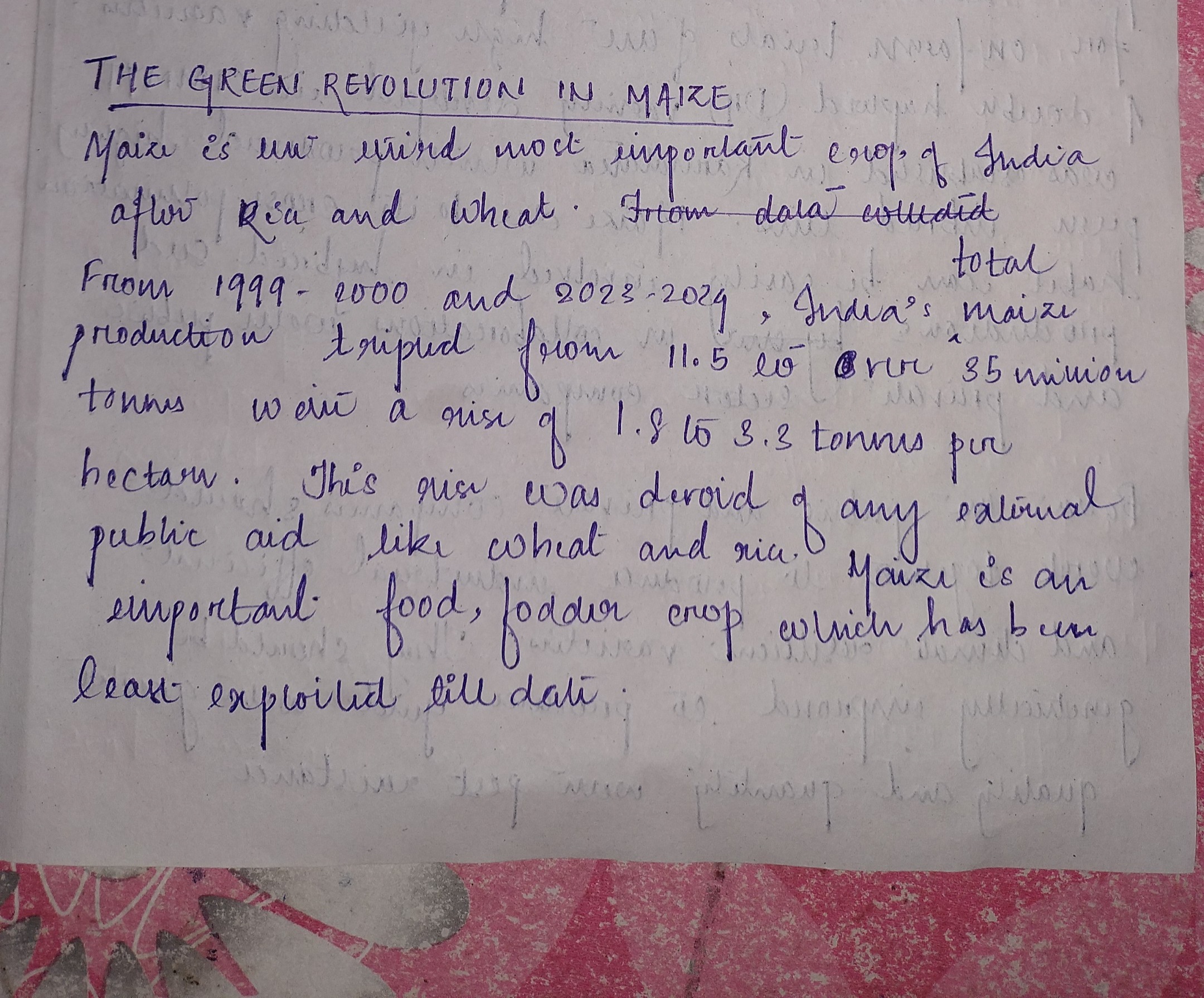Source: This post is created based on the article Explained: The green revolution in maize, published in Indian Express on 19th July 2024.
UPSC Syllabus Topic: GS Paper 3 – Agriculture – Crops and Cropping Pattern
News: Revolution in maize cultivation in India has dramatically increased maize production, transforming it into a crucial component of the agricultural and industrial sectors.
From 1999-2000 to 2023-24, India’s maize production tripled from 11.5 million tonnes to over 35 million tonnes, with per-hectare yields rising from 1.8 to 3.3 tonnes. This growth was achieved without the same level of public attention as wheat and rice.
What is the significance of Maize Cultivation?
Feed for Poultry and Livestock: Approximately 60% of India’s maize is used as feed for poultry and livestock. Maize, providing essential carbohydrates, forms a significant part of broiler and egg-layer feed, indirectly consumed by households through chicken, eggs, and milk.
Industrial Applications: Around 14-15% of maize is used industrially, particularly for its high starch content, which is utilized in textile, paper, pharmaceutical, food, and beverage industries.
Ethanol Production: Maize is increasingly used as a feedstock for ethanol production, particularly during the off-season for sugarcane. The development of waxy maize hybrids with high amylopectin starch content, such as IARI’s AQWH-4, has enhanced its suitability for ethanol production.
What are the developments that have happened in this field?
Waxy Maize Hybrid: IARI developed India’s first waxy maize hybrid with high amylopectin content, improving starch recovery and fermentation rates for ethanol production. This hybrid, with a potential yield of 8.8 tonnes per hectare, is poised for official release and commercial cultivation.
Collaboration with Distilleries: IARI has partnered with the Uttar Pradesh Distillers’ Association for field trials of the waxy maize hybrid, promoting its cultivation for ethanol production, which could significantly increase ethanol yields.
CIMMYT’s DH Facility: CIMMYT established a maize doubled haploid (DH) facility in Karnataka, accelerating the breeding process by producing genetically pure inbred lines. This facility has already produced over 29,000 DH lines, enhancing the efficiency of maize breeding.
Hybrid Breeding: Unlike self-pollinating crops like wheat and rice, maize’s cross-pollinating nature makes it amenable to hybrid breeding. The private sector has played a pivotal role in developing and promoting hybrid maize varieties, with over 80% of India’s maize area planted with private sector-bred hybrids.
Collaboration with CIMMYT: CIMMYT shares its improved inbred lines with both public sector institutions and private seed companies, fostering innovation and improving maize yields. Major private seed companies involved include Mahyco, Shriram Bio seed, and Advanta Seeds.
What more can be done?
Enhancing Yields and Resilience: Continued research through collaborations between public institutions and the private sector is essential. It will further enhance maize yields and resilience against climate change and pests.
Policy Support and Incentives: Government policies should support the cultivation of high-yielding and industrially significant maize varieties. It ensures that farmers benefit from improved technologies and market opportunities.
Sustainable Practices: Promoting sustainable farming practices and efficient resource use will be crucial in maintaining and enhancing maize production without compromising environmental health.







